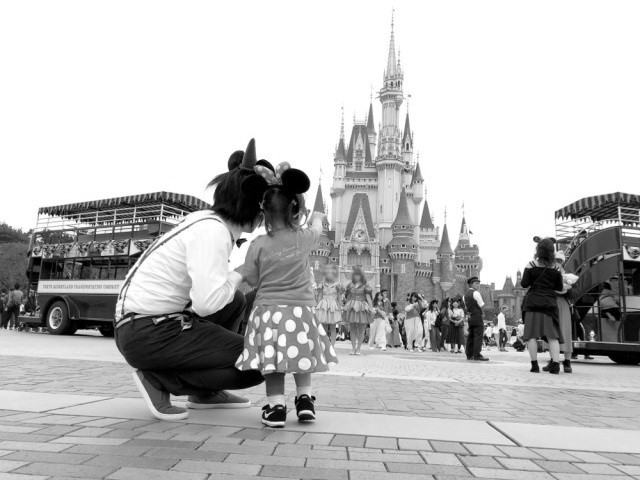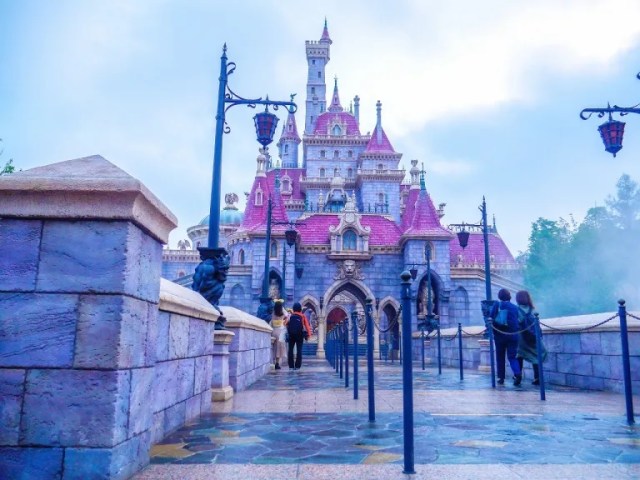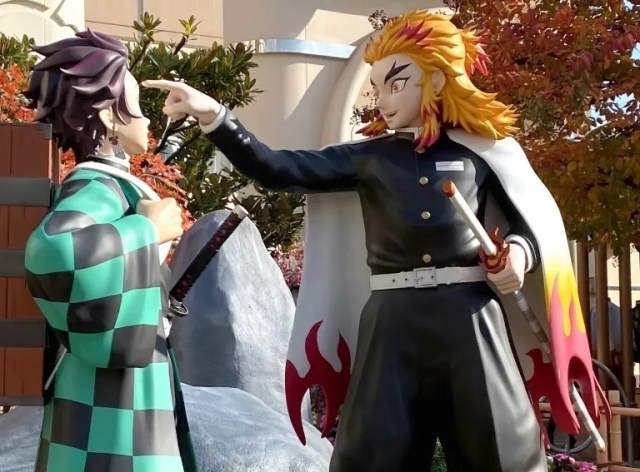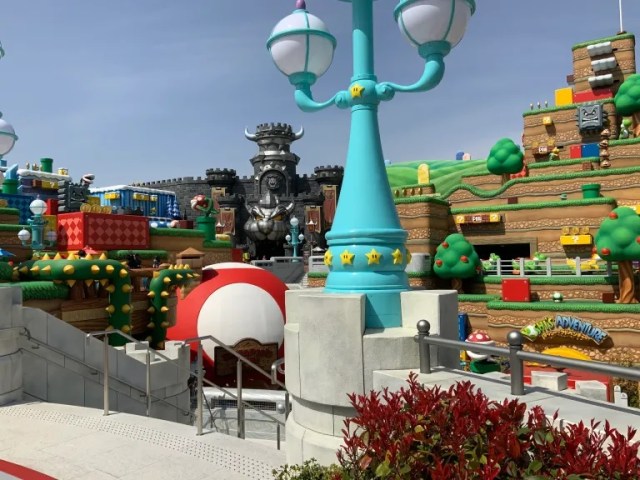
Why does Tokyo Disneyland keep falling behind its Osaka rival?
Pretty much from the moment it opened, Tokyo Disneyland has been Japan’s most prestigious theme park. However, it’s no longer Japan’s most popular theme park, at least in terms of the number of visitors it receives.
According to statistics compiled by the U.S.-based Themed Entertainment Association and consulting company AECOM, in 2023 more people visited Osaka’s Universal Studios Japan than Tokyo Disneyland. USJ’s attendance for the year was approximately 16 million, up 29.6 percent from 2022, while Tokyo Disneyland had only 15.1 million visitors, though it also enjoyed a 25.8-percent spike in attendance compared to the previous year. Worldwide, USJ and Tokyo Disneyland were the third and fourth-most visited theme parks in the world, trailing only Disney’s Magic Kingdom in Florida and the original Disneyland park in California.
Not only did USJ have more visitors than Tokyo Disneyland in 2023, it achieved that feat for the second year in a row. But how is the Osaka park, which opened in 2001 and trailed Tokyo Disneyland in attendance for much of the time since, finally pulling in Japan’s best visitor numbers? In an interview with Shueisha Online, Meiji University business administration lecturer Megumi Nakajima offered a few theories.
First off, Tokyo Disneyland is kind of in a lull between new attractions. It’s been four years since its Beauty and the Beast expansion (pictured above) opened, so its buzz has quieted down. Meanwhile, the new Fantasy Springs area, with attractions inspired by Frozen and Tangled, was supposed to have its opening in 2023, but that was delayed to this past June, so it’s likely some potential visitors postponed their Tokyo Disneyland visit until after 2023 as well.
In contrast, Universal Studios Japan almost always has some sort of new attraction that’s just debuted. This is largely thanks to the smaller scale and limited-time nature of these attractions, many of which are based on popular anime or Japanese video game franchises. Sure, a Demon Slayer: Kimetsu no Yaiba restaurant or Resident Evil haunted house may not match the splendor of a permanent Frozen castle, but they also don’t take years and years to develop and build, allowing USJ to quickly and flexibly give fans a taste of the world of franchises currently enjoying a popularity boom.
Nakajima also mentions the cross-generational popularity of series represented at USJ, citing the park’s 2022 Sailor Moon attraction as a big hit with women in their 30s and 40s who watched the ‘90s anime TV series while they were growing up, and also to an Attack on Titan attraction in 2015 being the first strong indicator for USJ that it could attract crowds looking for fantasies with more mature elements than the always-kid-friendly ones at Tokyo Disneyland.
Japan’s current inbound foreign tourism boom is also playing a part, Nakajima feels. It’s not hard to imagine that many foreign visitors don’t necessarily think of Disney when they think of Japan but most definitely do associate the country with video games and anime, thus making USJ the more appealing theme park to visit while they’re here, especially if they’re coming from a country that already has a Disneyland of its own.
One wrinkle to the statistics, though, is that while USJ had more visitors during the year than Tokyo Disneyland did, that may or may not mean that USJ sold more tickets. As Nakajima points out, Tokyo Disneyland stopped selling annual passes in 2020, and hasn’t made them available again since. USJ, on the other hand, has annual passes starting at 20,000 yen (US$135). Since adult ticket to USJ run from 9,400 to 19,000 yen, it’s pretty easy to get your money’s worth from an annual pass in just two trips to the park, and Nakajima thinks that those repeat visitors are a key part of why USJ is getting more visitors than Tokyo Disneyland these days.
Though Nakajima doesn’t discuss them herself, there may be some other economic factors at play as well. Over the past few years, Japan has seen significant increases to travel costs such as long-distance express train fares and hotel prices, stemming from general inflation, increased demand from foreign tourists, and travel providers’ zeal in recouping economic losses suffered during the pandemic. With Osaka/USJ located in the center of Japan’s main island of Honshu and Tokyo/Tokyo Disneyland on Honshu’s east end, USJ is more easily accessible, geographically speaking, for a lot of people. While the Tokyo area itself has a larger population than the Osaka one, for travelers coming from west Japan it might not make a lot of sense to blow right past Osaka to go all the way to Tokyo Disneyland when they could just go to USJ, making things easier on their budget with a shorter, less expensive train ride and maybe even doing it as a day trip that saves them the cost of a hotel.
This isn’t to say that Tokyo Disneyland is on the ropes, as Nakajima says that recently the park has been deliberately moving toward providing an improved experience for visitors instead of increasing total visitor numbers, and Disney fans have long shown a willingness to pay extra for premium niceties. In terms of total visitors, though, USJ is now Japan’s top theme park.
Source: Shueisha Online via Livedoor News via Hachima Kiko, AECOM
Photos ©SoraNews24
● Want to hear about SoraNews24’s latest articles as soon as they’re published? Follow us on Facebook and Twitter!




 Tokyo Disneyland or Universal Studios Japan, which is better? Poll reveals sharp regional divide
Tokyo Disneyland or Universal Studios Japan, which is better? Poll reveals sharp regional divide Tokyo Disney Resort plans 300-billion yen expansion, rumored to be third Tokyo Disney theme park
Tokyo Disney Resort plans 300-billion yen expansion, rumored to be third Tokyo Disney theme park TripAdvisor reveals Japan’s top ten theme parks
TripAdvisor reveals Japan’s top ten theme parks Universal Studios Japan to slowly open up while Tokyo Disney Parks stay closed
Universal Studios Japan to slowly open up while Tokyo Disney Parks stay closed No screaming on roller coasters, please, say Tokyo Disneyland, other Japanese amusement parks
No screaming on roller coasters, please, say Tokyo Disneyland, other Japanese amusement parks Hayao Miyazaki says Happy New Year to Studio Ghibli fans with new art for Year of the Horse
Hayao Miyazaki says Happy New Year to Studio Ghibli fans with new art for Year of the Horse Japan’s mint chocolate season hits Family Mart with 14 new choco mint treats (and five superstars)
Japan’s mint chocolate season hits Family Mart with 14 new choco mint treats (and five superstars) Animate Akihabara releases a lucky bag for the first time in years, and it’s amazing
Animate Akihabara releases a lucky bag for the first time in years, and it’s amazing Top Secret Cookie Recipe Finally Comes to Light
Top Secret Cookie Recipe Finally Comes to Light Japanese group to hold fashion show of colostomy bags and other stoma equipment in Paris
Japanese group to hold fashion show of colostomy bags and other stoma equipment in Paris 7-Eleven Japan’s ramen-cooking robot whipped us up a bowl of noodles【Taste test】
7-Eleven Japan’s ramen-cooking robot whipped us up a bowl of noodles【Taste test】 You can now buy a Japanese train station clock in Japan
You can now buy a Japanese train station clock in Japan Japan goes from capsule hotels to capsule offices with free Wi-Fi, device charging in Tokyo
Japan goes from capsule hotels to capsule offices with free Wi-Fi, device charging in Tokyo Travel tip: Fukuoka has a great luggage delivery service that’s cheaper than a coin locker
Travel tip: Fukuoka has a great luggage delivery service that’s cheaper than a coin locker Is China’s don’t-go-to-Japan warning affecting tourist crowds in Shibuya’s Don Quijote?
Is China’s don’t-go-to-Japan warning affecting tourist crowds in Shibuya’s Don Quijote? Starbucks Japan ready to get Year of the Horse started with adorable drinkware and plushies【Pics】
Starbucks Japan ready to get Year of the Horse started with adorable drinkware and plushies【Pics】 Cyberpunk anime meets traditional culture in Ghost in the Shell gold leaf Japanese changing screens
Cyberpunk anime meets traditional culture in Ghost in the Shell gold leaf Japanese changing screens 7 great places to see Mt. Fuji from without having to climb it
7 great places to see Mt. Fuji from without having to climb it Hello Kitty Choco Egg figures are an adorable trip through three periods of Japanese pop culture【Pics】
Hello Kitty Choco Egg figures are an adorable trip through three periods of Japanese pop culture【Pics】 Japan’s otoshidama tradition of giving kids money at New Year’s gets a social welfare upgrade
Japan’s otoshidama tradition of giving kids money at New Year’s gets a social welfare upgrade We found possibly the quietest Japanese-style hotel in Tokyo’s bustling Shinjuku district
We found possibly the quietest Japanese-style hotel in Tokyo’s bustling Shinjuku district Lacquerware supplier to emperor of Japan and Pokémon team up for new tableware
Lacquerware supplier to emperor of Japan and Pokémon team up for new tableware Sumo Sanrio! Hello Kitty and pals team up with Japan Sumo Association for new merch【Pics】
Sumo Sanrio! Hello Kitty and pals team up with Japan Sumo Association for new merch【Pics】 Can a dirty butthole make you filthy rich in Japan? We’re starting a New Year’s lottery experiment
Can a dirty butthole make you filthy rich in Japan? We’re starting a New Year’s lottery experiment 7-Eleven Japan starts new temporary luggage storage service in over 300 branches
7-Eleven Japan starts new temporary luggage storage service in over 300 branches Disillusionment at Tsukiji’s tourist-target prices led us to a great ramen restaurant in Tokyo
Disillusionment at Tsukiji’s tourist-target prices led us to a great ramen restaurant in Tokyo Starbucks teams up with 166-year-old Kyoto doll maker for Year of the Horse decorations【Photos】
Starbucks teams up with 166-year-old Kyoto doll maker for Year of the Horse decorations【Photos】 Tokyo considering law requiring more trash cans following litter increase in heavily touristed area
Tokyo considering law requiring more trash cans following litter increase in heavily touristed area Tokyo’s Tsukiji sushi neighborhood asks tour groups to stay away for the rest of the month
Tokyo’s Tsukiji sushi neighborhood asks tour groups to stay away for the rest of the month Nintendo’s Kirby now delivering orders at Kura Sushi restaurants, but not in Japan
Nintendo’s Kirby now delivering orders at Kura Sushi restaurants, but not in Japan Tokyo event lets you travel back in time, for free, to celebrate 100 years since Showa era start
Tokyo event lets you travel back in time, for free, to celebrate 100 years since Showa era start Sanrio theme park in Japan announces plans to expand into a Sanrio resort
Sanrio theme park in Japan announces plans to expand into a Sanrio resort Japan may add Japanese language proficiency, lifestyle classes to permanent foreign resident requirements
Japan may add Japanese language proficiency, lifestyle classes to permanent foreign resident requirements Survey asks foreign tourists what bothered them in Japan, more than half gave same answer
Survey asks foreign tourists what bothered them in Japan, more than half gave same answer Japan’s human washing machines will go on sale to general public, demos to be held in Tokyo
Japan’s human washing machines will go on sale to general public, demos to be held in Tokyo Japan’s deadliest food claims more victims, but why do people keep eating it for New Year’s?
Japan’s deadliest food claims more victims, but why do people keep eating it for New Year’s? We deeply regret going into this tunnel on our walk in the mountains of Japan
We deeply regret going into this tunnel on our walk in the mountains of Japan Studio Ghibli releases Kodama forest spirits from Princess Mononoke to light up your home
Studio Ghibli releases Kodama forest spirits from Princess Mononoke to light up your home Major Japanese hotel chain says reservations via overseas booking sites may not be valid
Major Japanese hotel chain says reservations via overseas booking sites may not be valid Put sesame oil in your coffee? Japanese maker says it’s the best way to start your day【Taste test】
Put sesame oil in your coffee? Japanese maker says it’s the best way to start your day【Taste test】 No more using real katana for tourism activities, Japan’s National Police Agency says
No more using real katana for tourism activities, Japan’s National Police Agency says Starbucks Japan reveals new sakura drinkware collection, inspired by evening cherry blossoms
Starbucks Japan reveals new sakura drinkware collection, inspired by evening cherry blossoms Updated cherry blossom forecast shows extra-long sakura season for Japan this year
Updated cherry blossom forecast shows extra-long sakura season for Japan this year Tokyo Disneyland fails to get top spot in survey asking Japanese kids what theme park they want to visit
Tokyo Disneyland fails to get top spot in survey asking Japanese kids what theme park they want to visit Tokyo Disneyland’s Beauty and Beast Castle, largest expansion in park’s history, announce opening
Tokyo Disneyland’s Beauty and Beast Castle, largest expansion in park’s history, announce opening Universal Studios Japan staff help celebrate visitor’s birthday with disappearing spray art
Universal Studios Japan staff help celebrate visitor’s birthday with disappearing spray art No Ghibli Museum, Tokyo Disneyland, or Universal Studios Japan as coronavirus closures extend
No Ghibli Museum, Tokyo Disneyland, or Universal Studios Japan as coronavirus closures extend Universal Studios Japan issues reminder warning about showing too much skin inside the park
Universal Studios Japan issues reminder warning about showing too much skin inside the park Tokyo Disneyland Electrical Parade returns after nearly two years
Tokyo Disneyland Electrical Parade returns after nearly two years Tokyo Disneyland will require visitors to wear masks indoors when it reopens next month
Tokyo Disneyland will require visitors to wear masks indoors when it reopens next month Tokyo Disneyland’s Space Mountain is now closed
Tokyo Disneyland’s Space Mountain is now closed Tokyo Disneyland cancels Christmas
Tokyo Disneyland cancels Christmas Tokyo Disneyland rings in Japanese New Year with special parades, kimono, and a flatulent pig
Tokyo Disneyland rings in Japanese New Year with special parades, kimono, and a flatulent pig The surprising name for Universal Studios Japan theme park in Okinawa leaves netizens confused
The surprising name for Universal Studios Japan theme park in Okinawa leaves netizens confused Tokyo Disneyland is giving the Haunted Mansion an anime-style re-theme
Tokyo Disneyland is giving the Haunted Mansion an anime-style re-theme Wheelchair fraudsters fake disabilities at Tokyo Disneyland, get called “jerks” online
Wheelchair fraudsters fake disabilities at Tokyo Disneyland, get called “jerks” online Brand-new all-Harry Potter theme park could be opening in Tokyo
Brand-new all-Harry Potter theme park could be opening in Tokyo Tokyo Disneyland and Disney Sea reveal what it’ll be like for visitors when they reopen【Videos】
Tokyo Disneyland and Disney Sea reveal what it’ll be like for visitors when they reopen【Videos】
Leave a Reply